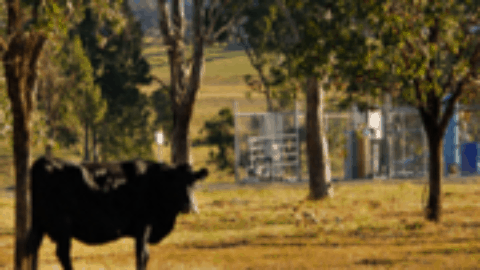CSIRO is looking for industry partners and councils interested in trialling water banking technology, a method of storing water underground that can provide increased water security and drought resilience.
The technology employs a long-term underground storage approach using managed aquifer recharge (MAR) that could help increase water availability during droughts.
Water banking through managed aquifer recharge is not a totally new idea – various versions of it have been used in Australia since the 1960s and it is applied at large scale in the United States.
The most advanced example of the concept in Australia is Water Corporation’s Groundwater Replenishment System in Western Australia, that purifies recycled water and injects it into aquifers for future augmentation of Perth’s drinking water supply.
However, the CSIRO says the practice is ready to be adopted more widely, especially to improve regional town water security.
A CSIRO study, published in 2020 in the journal Water, found that across the Murray-Darling Basin, there were storage opportunities of between two and four cubic kilometres in aquifers close to rivers. Since this study was published, the analysis has been extended to other regions across Australia.
CSIRO Principal Research Scientist, Dr Declan Page, said the principles of an underground water bank are simple.

“Basically, you take water in times of plenty and store it underground through managed aquifer recharge where it can be recovered again when needed during a drought,” Dr Page said.
Instead of pumping into above-ground storages, water is rapidly recharged into an aquifer through specialised infrastructure such as infiltration basins or injection wells.”
Storing water underground avoids algal blooms and mosquito problems associated with open water storage, and usually means much lower evaporative losses.
“Evaporation losses from surface storages can be significant – if you look at storages in northern NSW and Queensland for example, this can be up to 40 per cent of their capacity each year,” Dr Page said.
Published levelised cost estimates indicate that managed aquifer recharge systems can supply water at about $0.20-0.50 per kilolitre using surface water for recharge, and $1.50-2.00 per kilolitre using recycled water.
“Dams and more recently water recycling and desalination are often seen to be the main options for increasing water security,” Dr Page said.
“All options can make a contribution to water security. However, in areas where the topography, geology, climate or environmental impacts don’t make dams suitable, or towns are too far away from the ocean for desalination, water banking can be a cost-effective way for regional Australian towns to improve their water security.
“Drought resilience starts well before droughts hit, by planning, preparing and implementing practices that are water efficient and developing infrastructure that enables water conservation and storage.
“Water banking allows communities and their industries to potentially limit the economic impacts of a drought, operating at far less restrictive levels, for far longer.”
The CSIRO is currently looking for regional water utilities interested in seeing whether the technology can be used in their district.
While underground water banks will only work for places with a nearby, suitable aquifer, Dr Page said there were “significant opportunities” across all of Australia.
“There is a staged approach to developing water banking projects through the established Australian Guidelines for Managed Aquifer Recharge that outline the specific investigations needed to underpin investor confidence,” Dr Page said.
“CSIRO can provide the science and work with regulators but ultimately we won’t be the ones to operate water banks, so we are looking for industry partners.”
The CSIRO and its partners have invested $150 million to boost the agriculture and food sectors and conduct research to increase drought resilience and regional water security.
The CSIRO is conducting research to explore water banking opportunities in Australia and has had initial discussions with state and federal government representatives and industry peak bodies.
“There’s recently been a surge of interest in water banking and there is strong support from government and industry to investigate opportunities and work towards implementation,” Dr Page said.
“Regional communities have been hard hit during recent droughts with several towns in Australia effectively running out of water.
“Water banking is a storage solution that can use any type of water such as surface water, stormwater or recycled water as source water. The water that is abstracted can be treated to different levels, allowing a range of end uses from irrigation through to drinking water.
“As such, it can be used to enhance the efficiency and effectiveness of other existing and planned water security measures.”
Enabling managed aquifer recharge is an Action in the NSW Water Strategy.
CSIRO’s initial investigations suggest there may be aquifers in Australia that could store tens to hundreds of gigalitres or more in some areas.
“These are significant amounts of water but assessments at specific locations are needed to determine the feasibility and viability of potential sites prior to implementation of pilot schemes, demonstration sites and full-scale systems,” Dr Page said.
Mr Page also added “the CSIRO is actively pursuing opportunities to develop water banking projects through state and federal government funding and proposals; this would be strengthened with keen industry partners”.


















